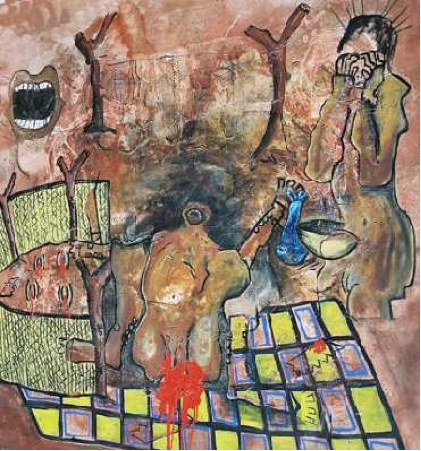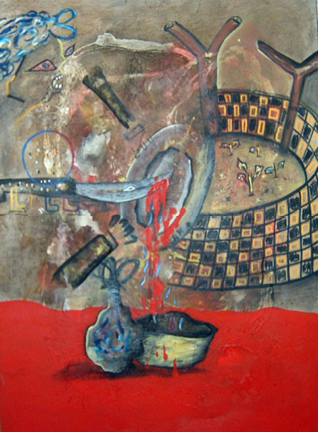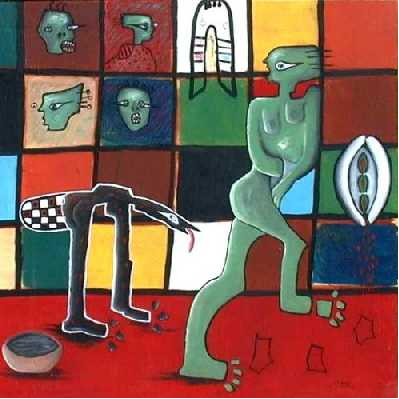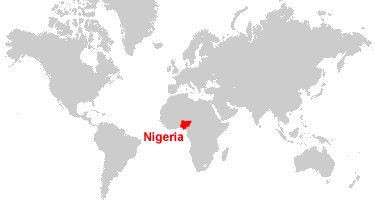

This video is an interview/short clip with a Somali-Canadian rapper named K’naan. The video was shot by his promotional staff, and was shot in Nairobi. The direct purpose of the video is for him to speak about his Video for a song called “Soobax.” The song as well as its lyrics are posted here.
In the video, K’naan speaks about his childhood in Mogadishu and his life as a refugee. He comments on his return to East Africa, and the importance of himself as a Somali musician. He shoots the music video in a neighborhood in Nairobi, known as Eastleigh, which is a large slum where many Somali refugees have settled. He speaks about the particular song he is recording and articulates the gist of the song. His view is basically that those responsible for violence in Somalia are at the root of the problems in the state and that is time for those same individuals to be held accountable for their crimes. I was introduced to him a few months ago, and much of his music has a similar tone.
It has been stated both on the blog and in class that alternative modes of expression are common for the subaltern. Music is an alternative means of expression. The “subaltern” have been stripped of their voice, their ability to articulate their views and their ability to really contextualize their own struggles to others using their own knowledge. It is tough to say however, if Music and or other art forms affect the elite in a way that calls them to action. Another important question is whether or not music is produced on “the periphery” or in the center. It is also important o consider who is listening to music that has the purpose of bringing voice to subjugated individuals or communities.
K’naan uses both Somali and English in his music, and he also uses traditional forms of Somali music at times. In this song the chorus in Somali and his angry tone really help him to get his point across. But, it is unclear whether this song is meant for a Somali audience that can relate to what he is saying or a Western audience that is unfamiliar with his point of view. Nonetheless, his use of Somali in this song, while still making it clear that it is hip-hop, allows it to effect any listener. He is really trying to give many Somalians a voice with this song, but on their own terms by using their language, alluding to aspects of Somali culture, shooting the video in an area where many Somali refuges have settled and speaking about the desires of these refugees. I believe that almost any refugees displaced from their home, and who live in poverty truly represent the subaltern. The main critique of subaltern modes of expression is that these forms of expression are often stuck in forms of Western discourse. I think K’naan is challenging this, and is using an effective method of speaking to the world without being subjugated to dominance discourse. However, there are certain elements that could take away from this, such as the fact that he is signed to a mainstream record label.
Ideas about piracy or ideas of Somalia as a failed state are the most common perceptions of a nation. K’naan and other critics have an interesting take on the roots of piracy in Somalia. There are some parallels that can be drawn between what we are studying in Columbia, and what is occurring in Somalia, with illegal fishing or waste dumping. In this case, piracy is a form of social struggle to many global and potentially capitalist processes. Or it is a means of fighting accumulation by dispossession. It is an interesting phenomenon that could be discussed quite a bit.
Somalia has been described as the world’s most “Failed State.” A stable, democratic state could not be formed based on Western models, and thus it is a “failure.” This is a strong example of how discourse affects development, since Somalia is heavily underdeveloped and its lack of stable statehood is often seen as the underlying reason for this. K’naan states in the video, that is really the “gunmen,” the warlords, who have power in the State, and he makes it clear that the people of Somali, many of whom were displaced, want to live in their homes in a peaceful society. This illustrates that political failure was not inherent in the Somali people or their culture, as many mainstream sources present as factual.
Development in Somalia is a major topic in itself but K’naan and his music speak to issues that must be dealt with when looking to promote development in Somalia. I recommend listening to some more of K’naan’s music, some of it really gives “voice” to many who cannot “speak.” Here are some links to songs I find that would fall into this category:
https://www.youtube.com/watch?v=kf7oVRo0tro&feature=channel
https://www.youtube.com/watch?v=bZwQZ19EKm8
On a personal note, I have visited Eastleigh in Nairobi and it is really the way K’naan describes it in the video. It was an area that other Kenyans do not really visit, and from what I could tell the people I saw there were all of Somali origin. I have most of my family in Nairobi, and the Indians in Nairobi are part of the elite. The huge differences in the places inhabited by these “foreign” groups in Nairobi realy struck me.













